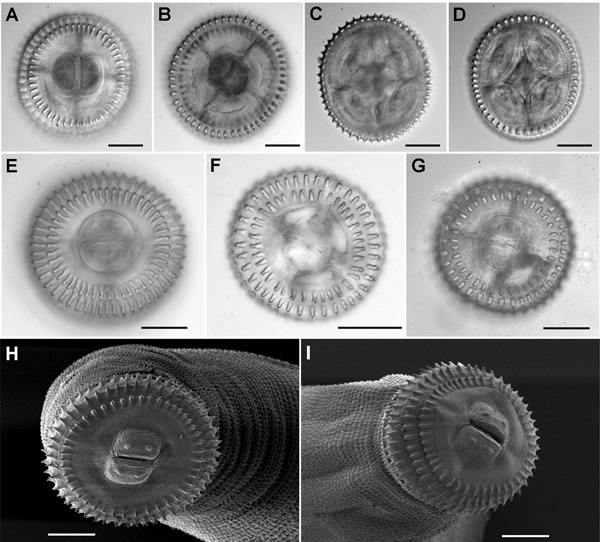Volume 20, Number 4—April 2014
Research
Gnathostoma spinigerum in Live Asian Swamp Eels (Monopterus spp.) from Food Markets and Wild Populations, United States
Figures 1

Figures 1. A–D) Views showing the technique used for hook counts of Gnathostoma spp., United States, En face (panels A, B) and posterior (panels C,D) views showing the technique used for hook counts; specimen shown here is of Gnathostoma spinigerum from eel 59 specimen b from gastrointestinal digestionE–G) En face mounts of the cephalic bulbs of specimens identified as 3 different species on the basis of molecular data: panel E, specimen eel 59 G, a, Gspinigerum; panel F, specimen eel 48 M, c, Gturgidum, and panel G, specimen eel 54 K, a, GlamotheiNote the difference between the hook counts in row 1 between Gspinigerum and the 2 other species (Table 2) H–I) Scanning electromicrograph of specimens from eel 9, identified as Gspinigerum on the basis of cephalic bulb hook countsScale bars = 50 µm.